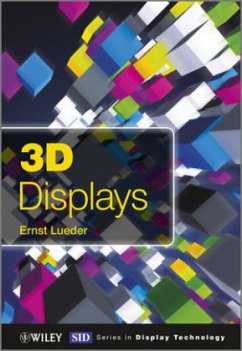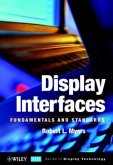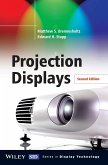This book addresses electrical engineers, physicists, designers of flat panel displays (FDPs), students and also scientists from other disciplines interested in understanding the various 3D technologies. A timely guide is provided to the present status of development in 3D display technologies, ready to be commercialized as well as to future technologies.
Having presented the physiology of 3D perception, the book progresses to a detailed discussion of the five 3D technologies: stereoscopic and autostereoscopic displays; integral imaging; holography and volumetric displays, and:
Introduces spatial and temporal multiplex for the two views needed for stereoscopic and autostereoscopic displays;
Outlines dominant components such as retarders for stereoscopic displays, and fixed as well as adjustable lenticular lenses and parallax barriers for auto- stereoscopic displays;
Examines the high speed required for 240 Hz frames provided by parallel addressing and the recently proposed interleaved image processing;
Explains integral imaging, a true 3D system, based on the known lenticulars which is explored up to the level of a 3D video projector using real and virtual images;
Renders holographic 3D easier to understand by using phasors known from electrical engineering and optics leading up to digital computer generated holograms;
Shows volumetric displays to be limited by the number of stacked FPDs; and,
Presents algorithms stemming from computer science to assess 3D image quality and to allow for bandwidth saving transmission of 3D TV signals.
Hinweis: Dieser Artikel kann nur an eine deutsche Lieferadresse ausgeliefert werden.
Having presented the physiology of 3D perception, the book progresses to a detailed discussion of the five 3D technologies: stereoscopic and autostereoscopic displays; integral imaging; holography and volumetric displays, and:
Introduces spatial and temporal multiplex for the two views needed for stereoscopic and autostereoscopic displays;
Outlines dominant components such as retarders for stereoscopic displays, and fixed as well as adjustable lenticular lenses and parallax barriers for auto- stereoscopic displays;
Examines the high speed required for 240 Hz frames provided by parallel addressing and the recently proposed interleaved image processing;
Explains integral imaging, a true 3D system, based on the known lenticulars which is explored up to the level of a 3D video projector using real and virtual images;
Renders holographic 3D easier to understand by using phasors known from electrical engineering and optics leading up to digital computer generated holograms;
Shows volumetric displays to be limited by the number of stacked FPDs; and,
Presents algorithms stemming from computer science to assess 3D image quality and to allow for bandwidth saving transmission of 3D TV signals.
Hinweis: Dieser Artikel kann nur an eine deutsche Lieferadresse ausgeliefert werden.
"Ernst Lueder's latest book in the SID-Wiley series, 3D Displays, does an excellent job of taking the incredible diversity of 3D display development and distilling it into key sub-areas ... In summary, 3D Displays is encyclopedic in scope, a great reference, and a recommended purchase." (Information Display, 1 May 2012)








